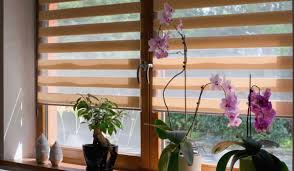With regards to home design, choosing the perfect window treatments can significantly increase the visual charm and functionality associated with a place. Blinds are a popular selection for their overall flexibility, delivering personal privacy, light handle, and magnificence. However, with growing worries about environment sustainability, it’s necessary to consider eco-pleasant choices when choosing Blinds (Jalusi)for your house or place of work. Here’s a guide to choosing the ideal environmentally friendly tones that position together with your fashion and principles.
1. Substance Assortment:
The initial step in choosing lasting colors is selecting the most appropriate resources. Look for blinds made out of alternative resources such as bamboo, that is fast-increasing and highly lasting. Bamboo blinds put a little normal style to your rooms when giving sturdiness and eco-friendliness. Alternatively, take into account blinds produced from natural and organic cotton or bed linen, that are biodegradable and environmentally liable alternatives.
2. Energy Productivity Capabilities:
To optimize power performance, go for eco friendly hues with additional functions including thermal insulation or refractive coatings. These advancements assist manage inside temperatures by obstructing out heating during the summer time and keeping ambiance in the winter. Cellular or honeycomb blinds are particularly effective at insulation windows, lowering vitality ingestion and power charges while maintaining ease and comfort 12 months-circular.
3. Customization Choices:
Opt for environmentally friendly shades that offer changes alternatives to fit your unique preferences and requirements. Several eco-pleasant blinds may be designed to put specific window shapes and sizes, ensuring a great in shape and highest coverage. Additionally, look for blinds available in a number of colors, patterns, and finishes to enhance your inside decoration design while still prioritizing sustainability.
4. Motorization and Smart Technological innovation:
For added ease and energy financial savings, look at making an investment in motor-driven environmentally friendly tones equipped with wise technologies. These blinds can be developed to open and close automatically according to time of day, sun light strength, or temperature, perfecting natural light and lowering reliance upon man-made lighting and home heating/chilling systems. When motor-driven blinds may have a higher upfront charge, the long term advantages regarding energy effectiveness and efficiency get them to a rewarding purchase.
5. Eco-Qualifications and Brands:
When searching for environmentally friendly hues, look for eco-certifications and brands that verify the product’s ecological qualifications. Qualifications like Woodland Stewardship Authority (FSC) for timber products or Worldwide Natural Textile Regular (GOTS) for natural and organic fabrics ensure that blinds meet up with demanding ecological and sociable standards through the entire producing approach. By deciding on certified sustainable shades, you will be certain that your buy works with accountable generation procedures.
6. Conclusion-of-Daily life Things to consider:
Lastly, think about the conclusion-of-daily life effects of your blinds when they reach the stop of the usable lifespan. Try to find blinds that are easily recyclable or bio-degradable, decreasing waste materials and environment influence. Some producers supply consider-back courses or trying to recycle campaigns for old blinds, providing a eco friendly removal answer for clients.
To summarize, deciding on the perfect eco friendly colors for your space consists of careful consideration of materials, vitality effectiveness characteristics, changes options, technologies incorporation, eco-accreditations, and conclusion-of-lifestyle things to consider. By prioritizing eco-warm and friendly Blinds (Jalusi), you are able to improve the beauty and functionality of your property or business office although reducing ecological effect and advertising a enviromentally friendly future for generations to come.
